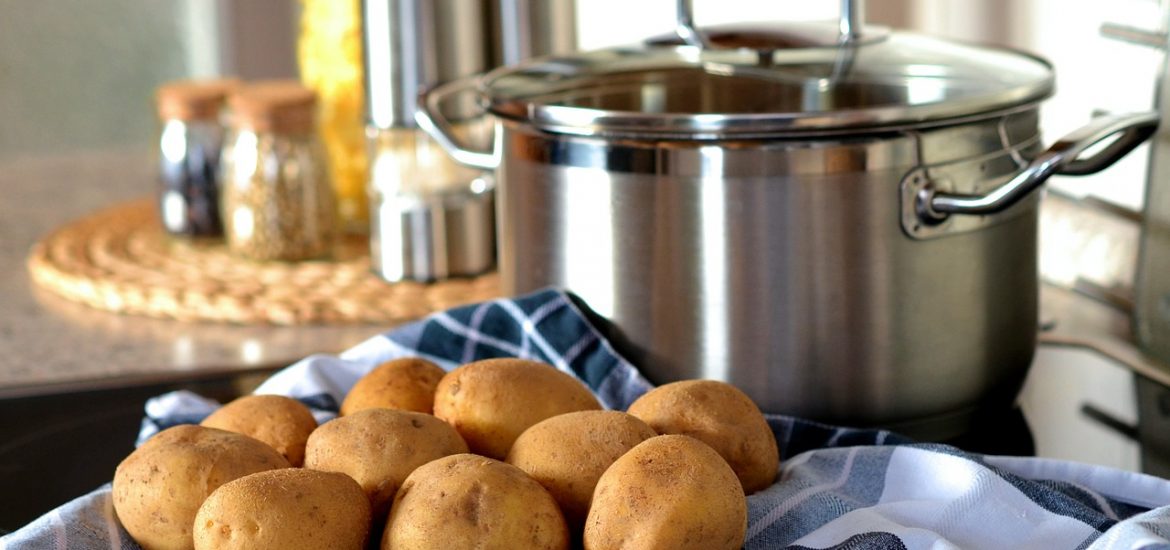A small kitchen is both a joy and a menace. Yes, everything is wonderfully close to hand and within easy reach! But that often means digging through layers stacked on top of layers to get to that rarely used ingredient at the back of the shelf. Ugh!
Keep yourself sane in your small kitchen by getting organised. A few key tips and adjustments and you can turn your place of despair into a well-regulated space.
Container crazy
As anyone who’s played pantry Tetris knows, it’s easier to organise items that are uniform in size and shape. When it comes to reorganising your food storage spaces, seriously consider investing in good quality stackable containers. Stop piling random bags of pasta and flour on top of one another all higgledy-piggledy – it’s time to put your Lego skills to use. Decant all dry ingredients into square or rectangle containers that can fit together without wasting space. Ideally, you’ll get matching containers in three different sizes – small, medium and large. Never get round ones, no matter how good they look!
With a bit of forethought and preparation you can create neatly stacked piles of your spices, rice, flour, pasta, cereals and any dry ingredients.
A stacking strategy
Once you’ve got your gorgeous stackable containers, you’ll need to think about your stacking strategy. This is every bit as serious as it sounds! Which items do you use the most and need to be at the top? Start with those and work your way down.
Ingredients like flour or oats tend to come in big quantities, so it makes sense to put them in a big container. Obviously, larger boxes will be on the bottom layer. But if you’re using oats every day, divide your stash into two smaller containers which can stay on top.
One key thing to keep your stacking sanity is to never stack more than two deep. In your perfect stacking system, you only ever want to move one or two containers to get to the one you need. Keep that goal in mind while devising your strategy.
Labels are your friend!
But all of the beautiful stacked and organised containers in the world will mean nothing if you don’t know what’s inside! Luckily, labels are your friend. They’re also a load of fun.
Most kitchen stores will stock pre-printed labels of the usual suspects – parsley, rosemary and thyme. But to achieve organisation greatness, print custom stickers for your kitchen items. Don’t be limited by other people’s imaginations. Go for gold and label your paprika, Himalayan sea salt, almond meal, and nutritional yeast – as well as staples like rice, popping corn, flour and black pepper.
There are few things that bring as much joy as seeing your well-organised and labelled containers looking back at you each time you open your kitchen cupboard. With a few personal touches to your labels – your favourite quotes, a sensible colour scheme – your pantry will make you smile every time you gaze inside.
Find underutilised spaces
All of this means nothing if you don’t have any space to begin with! But even the most cramped kitchen can yield surprising spaces if you take the time to look.
You need to dispense with assumptions. We’re used to stashing the bin under the sink – but could you use that space better? A few shelves and that could be the perfect cupboard for your oils, vinegars, and tin cans. What about the saucepan drawer? Shift your pots and pans elsewhere, and that can become extra handy pantry space. Find the nooks above, behind and below appliances and shelves – there may be more space than you think.
Hanging hooks!
Which is where hooks come in. We’re often wedded to the idea of putting things on shelves or in cupboards, but a lot of your utensils and pots and pans can be suspended from hooks. The sides and backs of cupboards are good places, or under high shelves. Individual hooks can be used for small objects, or install a kitchen rack for multiple items.
Again, you need to have a strategy. Don’t just hang five things on one hook like an overloaded coat hanger. Which items do you use the most frequently? Make sure they are the closest to the top, and never hang more than two items on one hook.
Also, if you are going to hang saucepans, ensure your hooks or rack can support the weight. You don’t want to wake up in the middle of the night to the sound of all of your cookware falling off the wall.
Ditch the shelves
Finally, think about ditching shelves. They’re often not necessary or take up more space than they’re worth. Are they providing enough value in the space stakes? If you’re able to renovate, it could be worth demolishing the shelves and replacing them with racks, drawers, sliding shelves, and other more versatile solutions. The days of plain wooden shelves are definitely behind us.
Even the tiniest kitchen can be transformed with a bit of imagination and a lot of planning. Thinking outside the box is definitely the key – you may find it’s bigger on the inside than it appears.

